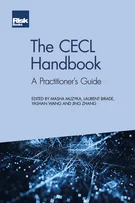Have We Learned the Country Risk Management Lessons of the 1997 Asian Financial Crisis?
Christine Shields
Have We Learned the Country Risk Management Lessons of the 1997 Asian Financial Crisis?
Preface: Two economists’ views on the bank-sovereign linkage
Introduction
Assessing Country Risk: A Practical Guide
Sovereign Risk: Characteristics, History and a Review of Recent Research
The Arab Spring: Insights for Political Risk Analysis
The Eurozone Crisis: The Forgotten Risks of Private and External Debt
How the Eurozone Crisis Became a Banking Crisis, and the Risk of Japanisation
The Changing Dynamics of Country Risk
Capital Flight as a Political Risk Indicator
Debt Crisis Indicators of Emerging Markets versus Eurozone Economies
How Much Economic Capital Could European Banks Save? The Case for Optimal Sovereign Risk Allocation
Fixing Fundamental Flaws in Probabilistic Country Risk Models
Have We Learned the Country Risk Management Lessons of the 1997 Asian Financial Crisis?
Using Systems Thinking to Enhance Country Risk Assessment
Approaches to the Quantification of Country Risk
Stress Testing Across International Exposures and Activities
Having worked through the 1997 Asian financial crisis, I have vivid memories of the shock in the markets, and the scale and speed of economic collapse in those countries worst affected. Until then, no one would have anticipated that Indonesia’s rupiah could collapse from around Rp2,500 to Rp15,000 per US dollar. In banks, dealmakers regularly stressed their proposed deals to ensure that the structure would still be robust if interest rates jumped (or fell) or currencies depreciated. However, the extent of the stress most banks used was nowhere near the scale of what actually happened in Indonesia.
Are we better able now to identify and manage such nascent country risk problems, given the changes in data standards, deeper and more transparent markets, faster media reporting, tighter regulation and greater prevalence of analytical tools such as stress testing? Are we still just as vulnerable to asymmetric information? Are markets still myopic despite more sophisticated risk analytics? Most critically, is risk being correctly priced?
In sum, have we learned the lessons of the Asian financial crisis? Following a review of the causes and consequences of the crisis (for those who
Copyright Infopro Digital Limited. All rights reserved.
As outlined in our terms and conditions, https://www.infopro-digital.com/terms-and-conditions/subscriptions/ (point 2.4), printing is limited to a single copy.
If you would like to purchase additional rights please email info@risk.net
Copyright Infopro Digital Limited. All rights reserved.
You may share this content using our article tools. As outlined in our terms and conditions, https://www.infopro-digital.com/terms-and-conditions/subscriptions/ (clause 2.4), an Authorised User may only make one copy of the materials for their own personal use. You must also comply with the restrictions in clause 2.5.
If you would like to purchase additional rights please email info@risk.net





